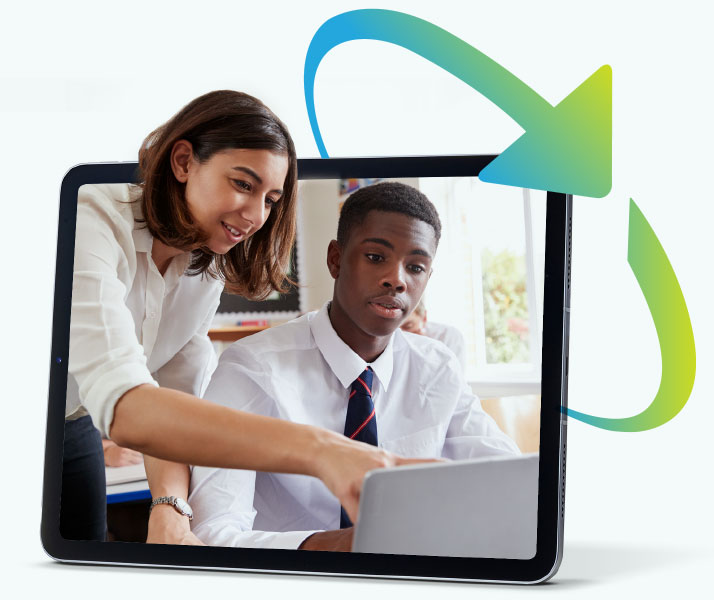The terms “hybrid” and “blended” learning are the new “it” words in a post-pandemic education system. Nevertheless, how can you know whether you are doing things correctly or not? There appears to be an infinite number of authors claiming to be experts in this field offering “best suggestions.”
After reading various versions for several weeks, I have decided to compile my tips into what I believe to be seven reasonable suggestions to assist teachers with the process of starting with an online classroom.

1. Treat your online classes as equally vital as your face-to-face classes in terms of importance.
While there are numerous distinctions between online and face-to-face learning, there are also many commonalities between the two types of learning. Just because you have moved from a face-to-face classroom to a virtual one does not mean that the traditional classroom rules have been completely abandoned. Please make sure that you provide explicit norms for online etiquette from the beginning of the course so that the learners understand what is expected of them in terms of online behaviour. Simply remaining on mute to avoid background noise, raising hands when necessary to talk, using the chatbox to ask questions, coming on time to class sessions, and providing others with a chance to speak are all crucial fundamentals to learn from the beginning of the term.
2. Modify your teaching approach to accommodate online instruction and learning.
For various reasons, many learners may prefer face-to-face instruction over online instruction, believing that online instruction is insufficient in comparison. The challenge is in figuring out how to take advantage of this situation.
Online learning environments have the ability to convert a classroom from a sterile chalk-and-talk atmosphere to a lively, engaging, and entertaining environment that can help you bring your classroom to life. It is, however, crucial to plan your time effectively. Use carefully curated movies, simulations, short self-marking multiple-choice questions, and group exercises, for example, to teach a topic and assess understanding. In addition, avoid falling into the trap of believing that you must speak throughout the entire class.
3. Foster a sense of community among the learners.
A common complaint I hear from learners is that they lack this sense of community in an online environment. Ensure that your learners have access to the chat feature of your learner management system, as well as the ability to post comments on other learners’ posts. Create a network where learners can ask each other questions about a topic or provide feedback on a topic, either during a session or while working on homework. A WhatsApp group is an excellent tool for accomplishing this. Try incorporating group activities into your classes so that learners have the opportunity to collaborate with one another, whether they are synchronous (such as break-away groups to work on something) or asynchronous (such as online discussions – a group wiki is a great tool which everyone can contribute towards.)
4. Provide feedback, feedback, and more feedback.
Providing timely feedback in any classroom is arguably one of the most crucial suggestions for any teacher, and it should probably be moved up to number one on this list. Being unable to physically see a teacher or other learners all of the time may cause learners to feel alienated and alone. From the beginning, make sure you establish an online presence where you can post updates and comments regularly, respond to learners with feedback as quickly as possible, and have an ‘open-door policy where learners feel comfortable approaching you with questions and knowing that you will respond within a specified time frame. Small gestures like this will demonstrate to your learners that you are present and available to satisfy their varying needs and expectations.
5. Make an effort to be inclusive.
Keep reminding yourself that an online classroom is quite similar to a face-to-face classroom. Just as in a traditional classroom, remember to ‘observe’ your learners in the same way you would in a regular classroom setting. If you compare it to a typical classroom, you will find that some learners are very outspoken and feel the need to speak all of the time, whilst others may feel very shy or scared and not want to speak at all. Moreover, of course, the class comedian is always looking for an opportunity to make a joke at the worst possible time. Bring yourself back to Tip 1 and refresh your memory on proper classroom behaviour. As a last reminder, keep Tip 5 in mind while planning for these circumstances so that you can bring out the best in all of your learners without being distracted by anything that could derail your teaching.
6. Provide your learners with a clear road map of what is expected of them at each stage of the process.
We all want to know where we are going in our learning and precisely what is expected of us at every stage. Never assume that your learners understand what is expected of them; instead, overemphasize what is necessary and when it is required and in what format it is required. Check-in with your learners regularly and send out reminders for work that is about to be required. This will guarantee that your learners stay on track and can plan their time effectively.
7. Putting in the time and effort pays off.
Do not allow yourself to become overwhelmed. Practice makes perfect, as is valid in all aspects of life. You have the right to make mistakes, learn from them, and correct your faults for the next time. Do not be afraid to experiment with new apps or platforms to determine what works best for you and your learners, and then adapt your teaching to include these new tools. This will not only allow you to keep your teaching interesting, but it will also allow you to create an exciting and engaging environment in which your learners will be motivated to study.
I hope you found these suggestions to be helpful. I would be interested in hearing what your suggestions are for teaching a blended or hybrid class. Please feel free to share these in the comments section below, and let us see if we can add some fantastic new suggestions to this list.




